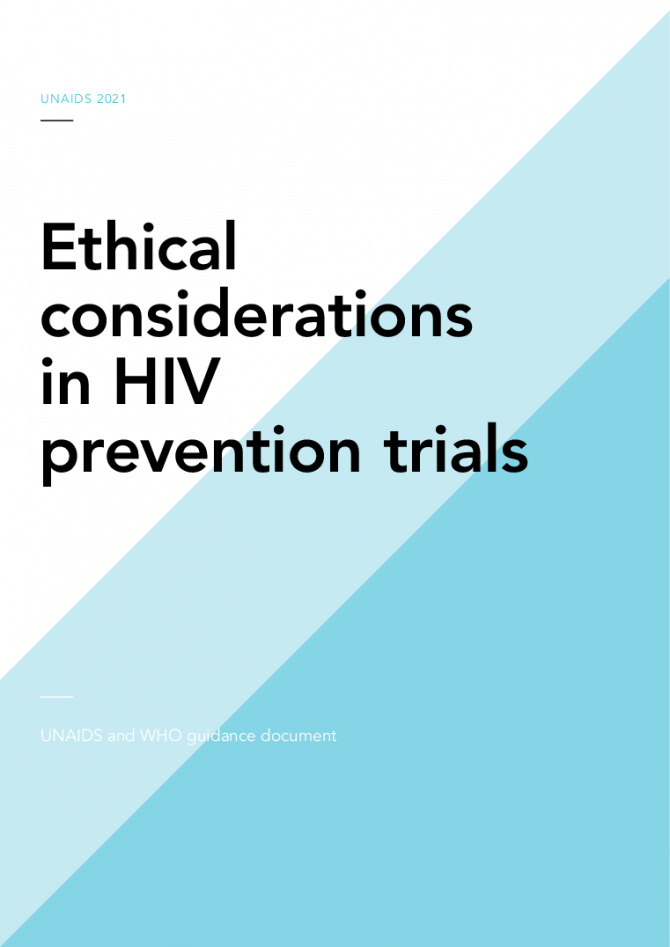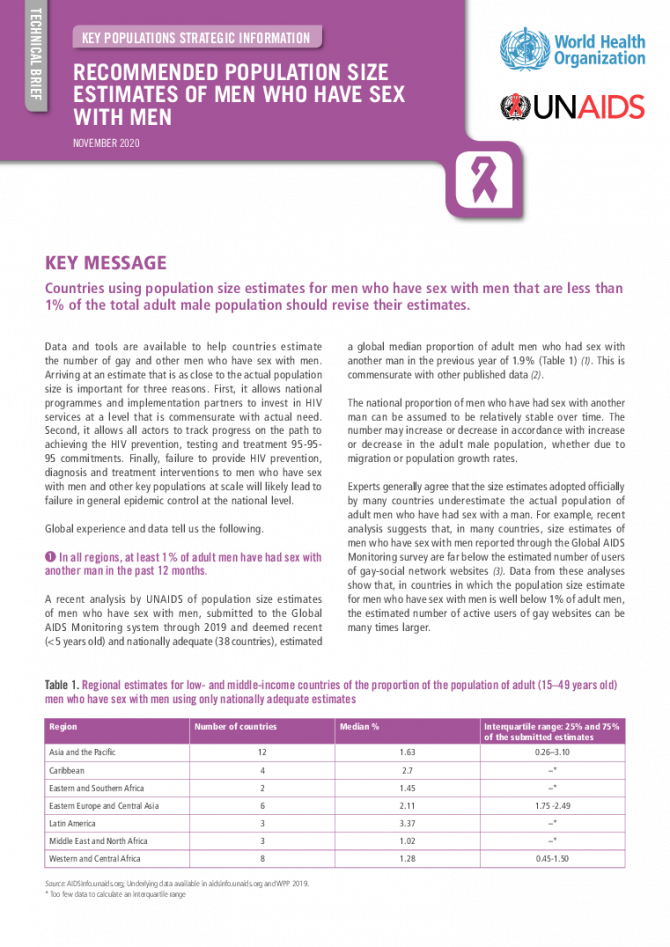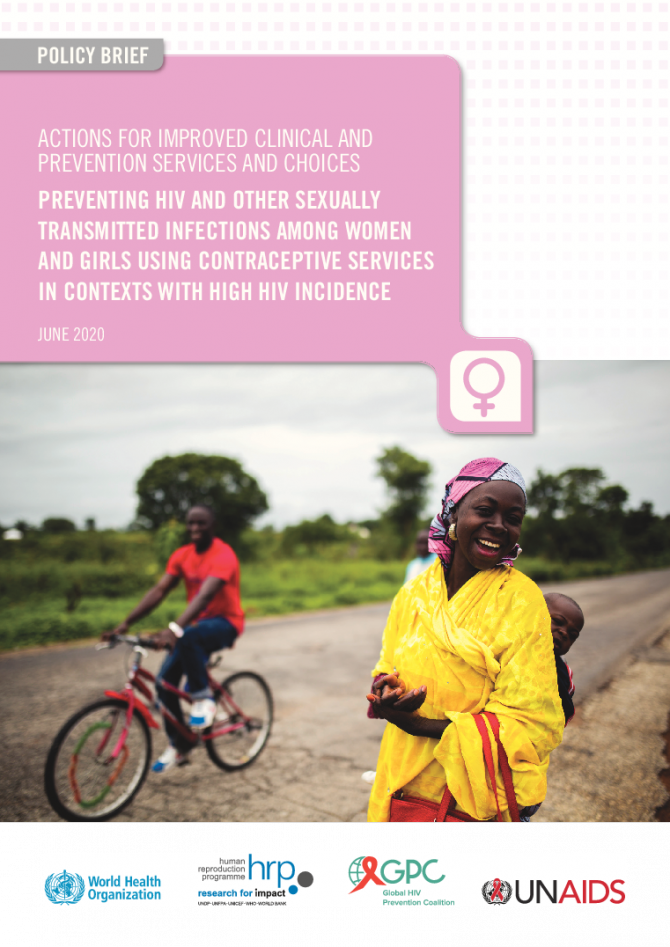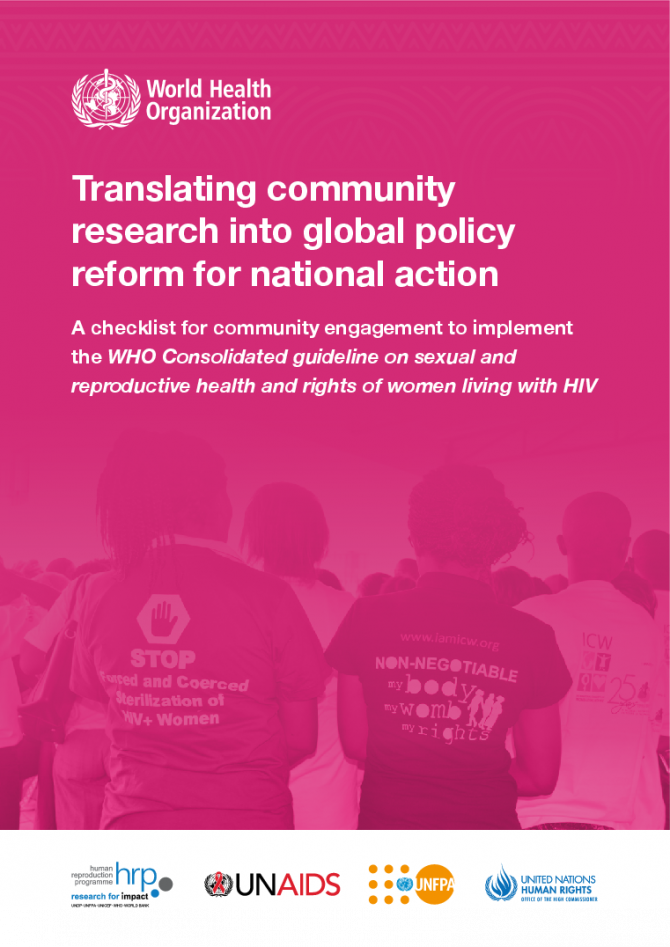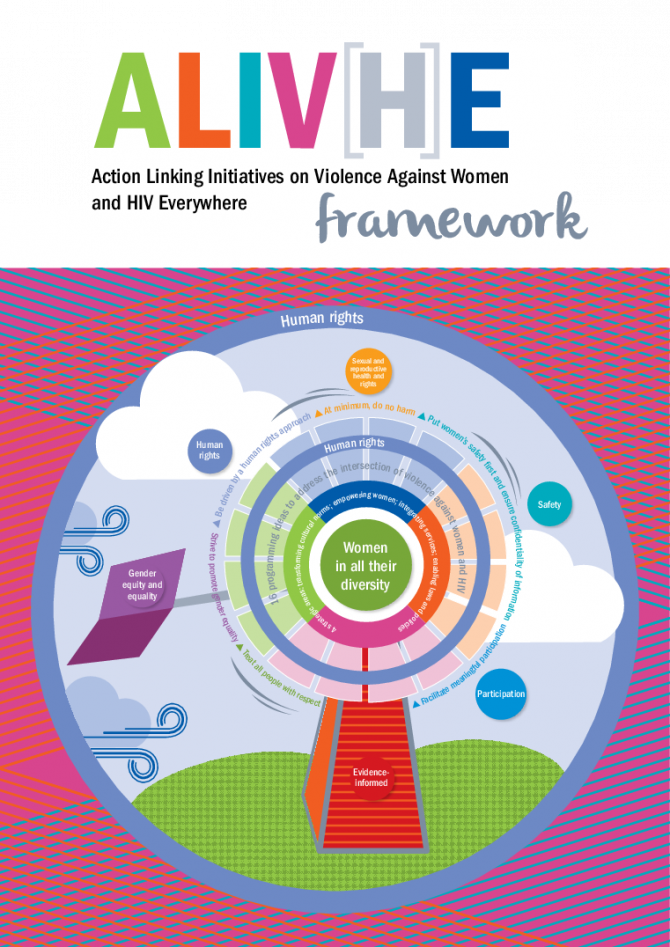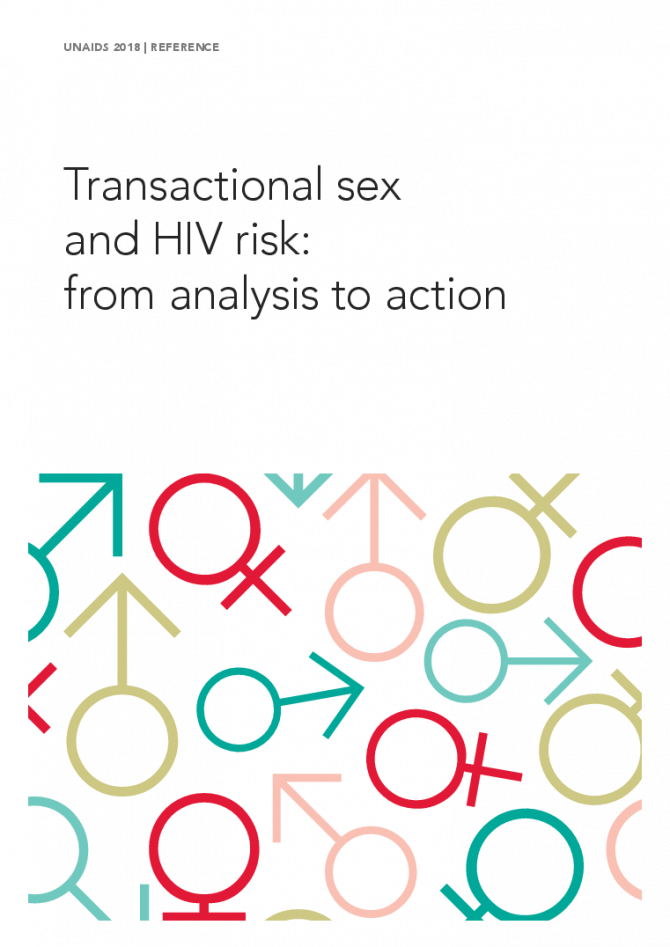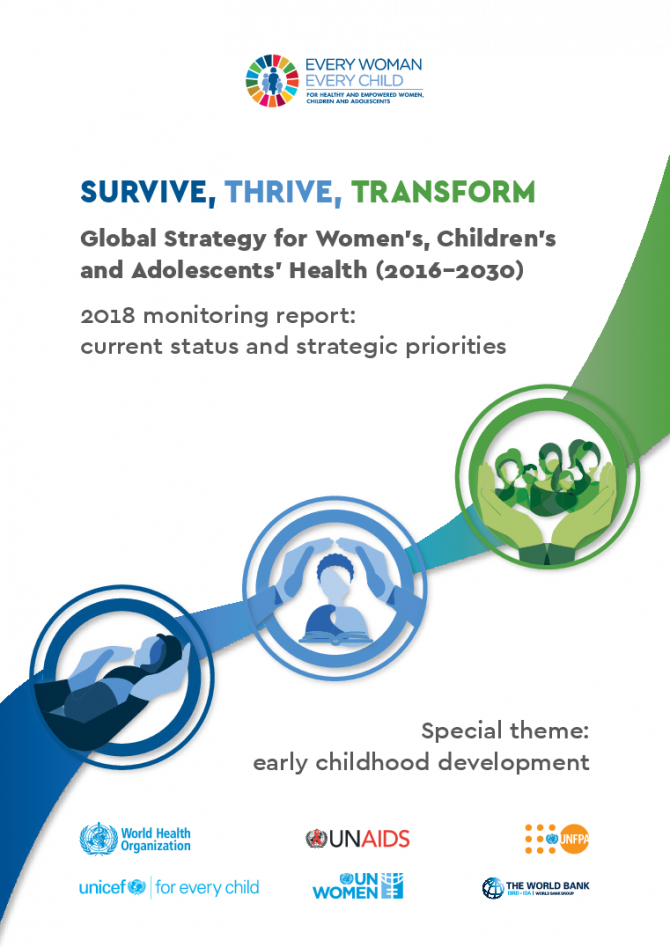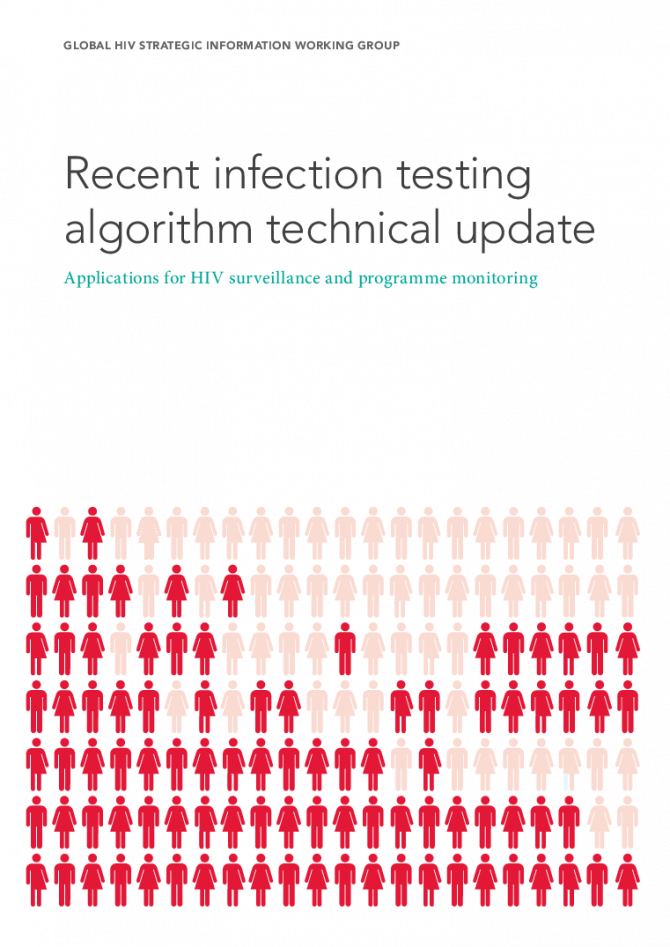Documents
The Global Alliance to end AIDS in children
30 July 2022
An end to AIDS in children, achieved through a strong, strategic, and action-oriented alliance of multisectoral stakeholders at national, regional, and global levels that works with women children and adolescents living with HIV, national governments, and partners to mobilize leadership, funding, and action to end AIDS in children by 2030.
Documents
Ethical considerations in HIV prevention trials
27 January 2021
UNAIDS and the World Health Organization have published this updated guidance on ethical considerations in HIV prevention trials. The new guidance is the result of a year-long process that saw more than 80 experts and members of the public give inputs and is published 21 years after the first edition appeared. Read the story announcing this guidance This document is also available in Portuguese.
Documents
Still not welcome — HIV-related travel restrictions
27 June 2019
Mandatory HIV testing and bans on entry, stay and residence based on HIV status not only do not protect public health but undermine HIV prevention and treatment efforts. For millions of people living with HIV around the world, these are repeated violations of their right to privacy, equality and non-discrimination and a constant reminder of HIV-related stigma. In 2016, United Nations Member States agreed to eliminate HIV-related travel restrictions. In 2019, around 48 countries and territories still maintain some form of HIV-related travel restriction.
Documents
Recommended population size estimates of men who have sex with men
01 November 2020
Men who have sex with men are a key population in the global response to HIV. Global targets are for 95% of men who have sex with men to be reached by HIV prevention, diagnosis and treatment services by 2025. To monitor progress to these important targets, estimates of the number of men who have sex with men need to be as close to the true number as possible. Many countries currently underestimate the number of men who have sex with men due to structural issues that make recommended population size estimate methods difficult to carry out. However, data from those countries with valid and sound estimates reported through the Global AIDS Monitoring system show that at least 1% of all adult men have had sex with another man in the last one year, regardless of which region of the world the estimates come from. WHO and UNAIDS recommend that countries adjust size estimates of men who have sex with men to ensure that the estimated number of adult men who have sex with men is at least 1% of all adult men and to use revised estimates for planning and monitoring services.
Documents
Actions for improved clinical and prevention services and choices: Preventing HIV and other sexually transmitted infections among women and girls using contraceptive services in contexts with high HIV incidence
05 June 2020
This programmatic brief explores how to expand HIV and STI prevention and contraceptive method options in contraceptive services and, thus, to reduce HIV and STI incidence among adolescent girls and women. It focuses on settings with extremely high HIV prevalence and incidence. This brief complements existing guidance on HIV prevention and sexual and reproductive health and rights (SRHR), amplifies calls for action and outlines more comprehensive approaches to integration of SRHR and HIV services. It also emphasizes the importance of SRHR for women living with HIV. It aligns with updated WHO recommendations for contraceptive eligibility for women at high risk of HIV and other HIV guidance for adolescent girls and young women.
Documents
Translating community research into global policy reform for national action: a checklist for community engagement to implement the WHO consolidated guideline on the sexual and reproductive health and rights of women living with HIV
20 December 2018
This Checklist supports the in-country implementation of the 2017 WHO and UNAIDS Consolidated guideline on the SRHR of women living with HIV. To guarantee the guideline’s effective implementation and fulfil its ground-breaking women-centred spirit and principles, its uptake must include the meaningful engagement of women living with HIV in all their diversity. This guideline was developed with engagement from communities of women living with HIV throughout its development, publication and dissemination. In line with this collaborative process, it discusses implementation issues that laws, policies, health, social and other relevant initiatives and service delivery must address to achieve gender equality and support human rights. The overall objective of this Checklist is to support women living with HIV and community activists who care about the rights of women living with HIV to guarantee effective implementation of the WHO and UNAIDS Consolidated guideline on the SRHR of women living with HIV.
Documents
Action Linking Initiatives on Violence Against Women and HIV Everywhere, ALIV(H)E framework
01 November 2017
The Action Linking Initiatives on Violence Against Women and HIV Everywhere (ALIV[H]E) Framework is an applied research implementation framework. It draws on the evidence for ‘what works’ to prevent HIV and violence against women and adolescent girls (VAW) in all their diversity, in the context of HIV. At the same time, it aims to contribute to expanding the evidence base on what works to reduce VAW. The ALIV[H]E Framework provides a step-by-step approach to developing an effective programme, including a monitoring and evaluation (M&E) framework, for implementing and evaluating VAW and HIV responses. All the steps and actions are completed through participatory and group-based discussion, practical exercises, and reflection with community members, under the guidance of local non-governmental organizations (NGOs), community based organizations (CBOs) and, ideally, alongside other organizations that support or work with this community.
The framework aims to support NGOs and CBOs, working with community members, in leading creative and dynamic programmes to address VAW in the context of HIV. The framework can also be used by donors, researchers, policy-makers and others to expand the evidence base in partnership with NGOs and CBOs.
UNAIDS engaged the AIDS Legal Network; the ATHENA Network; Health Economics and HIV and AIDS Research Division (HEARD) of the University of KwaZulu Natal South Africa; Project Empower; and Salamander Trust, to create this framework. Its effectiveness and lessons learnt have been captured in reports, webinars and presentations all accessible here. A July 2020 webinar on VAW in the context of HIV and COVID-19 is also available.
Documents
Transactional sex and HIV risk: from analysis to action
20 September 2018
This reference document provides a detailed analysis of transactional sex and discusses
policy options and principles of engagement around transactional sex in the context of
HIV prevention. Although transactional sex is practiced by men and women in all regions
of the world, this document focuses specifically on the determinants and consequences
of adolescent girls’ and young women’s engagement in transactional sex in sub-Saharan
Africa. We focus on this population because of the potential importance of transactional
sex for young women’s HIV risk in this region. The document will not address men who
have sex with men or gay men and transgender people and the engagement around
transactional sex.
Documents
Survive, Thrive, Transform — Global Strategy for Women’s, Children’s and Adolescents’ Health (2016–2030) — 2018 monitoring report: current status and strategic priorities
28 May 2018
The report sets out the status of women’s, children’s and adolescents’ health, and on health systems and social and environmental determinants. Regional dashboards on 16 key indicators highlight where progress is being made or lagging. There is progress overall, but not at the level required to achieve the 2030 goals. There are some areas where progress has stalled or is reversing, namely neonatal mortality, gender inequalities and health in humanitarian settings. The report also highlights new evidence with a special focus on early childhood development as a foundation for health and well-being across the life course. There are new estimates on the causes of death in children older than 5 years; most are preventable. Each section of the report highlights strategic priorities, interventions and approaches that could help countries address challenges and accelerate progress.
Documents
Recent infection testing algorithm technical update — Applications for HIV surveillance and programme monitoring
01 March 2018
This technical update provides public health officials with guidance on applying HIV incidence assays and testing algorithms for recent HIV infection in order to monitor the HIV epidemic and assess the impact of interventions. A major theme of this update is the importance of calibrating two of the key performance characteristics of recent testing infections algorithms—mean duration of recent infection and false recent ratio— to account for the context in which the testing is being done. This technical update also describes several emerging use cases in the application of recent infection testing algorithms and tests, including those for individual-level use. A final section on further research directions is provided to highlight areas that still require investigation.


